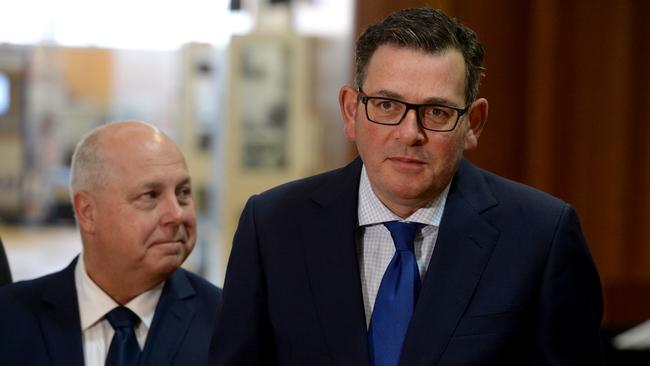
In November 2018 – two days before the state election that would herald the Andrews government’s second term, and long before anyone had ever heard of Covid-19 – Treasurer Tim Pallas announced he would double Victoria’s debt ceiling from $30bn to $60bn over the four years to 2022 to fund major infrastructure projects.
Every Andrews government major project has suffered cost blowouts, be it the West Gate Tunnel – which is set to cost at least $3.9bn more than originally promised, as well as being delivered three years behind schedule – or the $12.6bn Metro rail tunnel, where Victorian taxpayers have funded half of a $2.74bn blowout.
Much of Victoria’s debt – forecast to reach $165.4bn by 2025-26 – was baked in well before the virus hit, and the list of major projects desperately requiring a bailout is long, and unrelated to the pandemic.
The ultimate cost of the North East Link toll road – jointly funded by the state and federal governments – is not yet clear.
But it is certain to exceed the $15.8bn cited by the state government ahead of the 2018 election, given the consortium awarded the contract to build, operate and maintain the 6.5km of tunnels in the 26km project will be paid at least $11.1bn.
Albanese has pledged $2.2bn towards the estimated $34.5bn cost of building the Cheltenham-to-Box Hill section of the Suburban Rail Loop, but with $11.8bn allocated from state coffers and little detail made public about plans to fund the remainder through a public-private “value capture” partnership, it’s a sure bet taxpayers will be on the hook for more money just to complete the first stage of a project the Parliamentary Budget Office estimates could cost as much as $200bn.
Then there’s the $2.6bn 2026 Commonwealth Games (cancelled in July), to which the Albanese government is yet to commit funding, having allocated $3.4bn for Queensland’s 2032 Olympics.
While Covid-19 dealt a massive blow to all state budgets, Victoria’s levels of debt stand head and shoulders above those of other states for reasons unrelated to the pandemic. By 2025-26, NSW, with a larger population, is set to reach a net debt level of $116.5bn, compared with Victoria’s $165.4bn.
While plans announced last month to require government departments to shrink their budgets reveal some consciousness at 1 Treasury Place of the gravity of Victoria’s fiscal situation, questions need to be asked about why the public service wages bill was allowed to balloon to the extent that it has in the first place.
When Labor came to government in 2013-14, public sector wages cost $19bn.
In 2025-26 the bill is forecast to increase to $35.8bn – a figure that doesn’t account for the doubling of the wage cap from 1.5 per cent to 3 per cent, which the government quietly announced last week amid rising inflation and union pressure.




Daniel Andrews might not want to call it a bailout, but the reality is that his lobbying of Anthony Albanese for “more and more” financial support comes at a time when the Victorian budget is headed over a fiscal cliff as a result of decisions the Premier’s team has made over more than eight years in government.